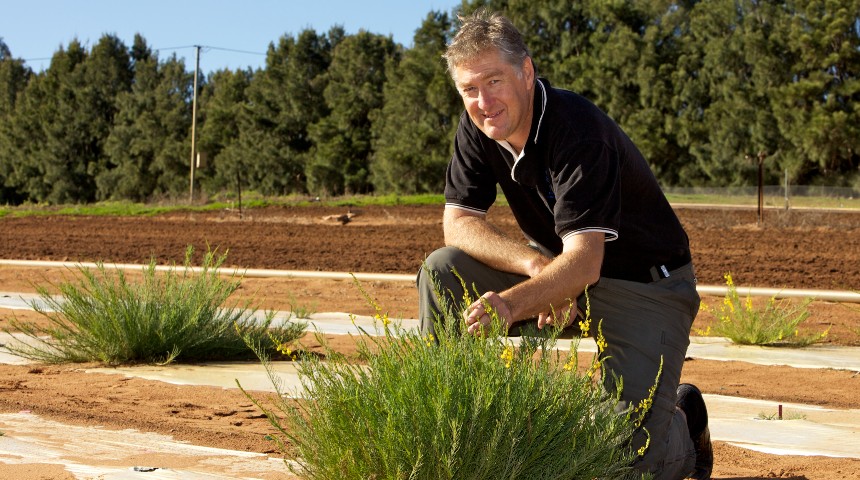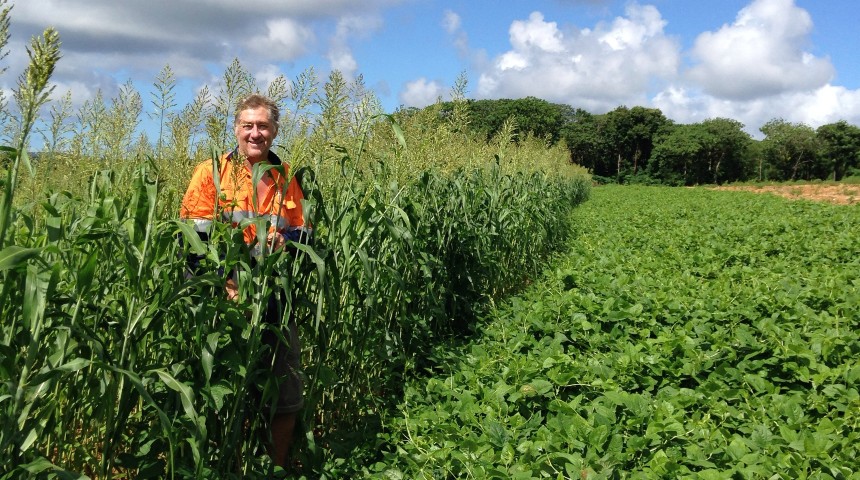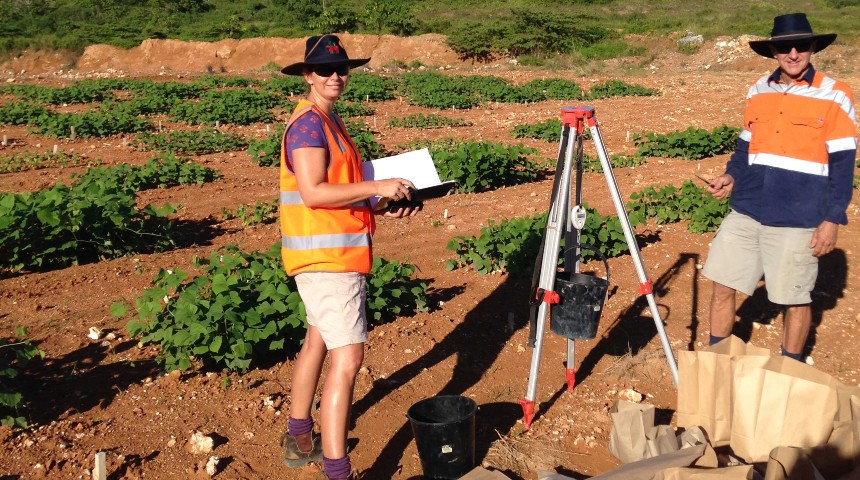
Murdoch researchers are transforming Christmas Island’s economy from phosphate to food production, research and education. Here's how.
Christmas Island is known for its incredible biodiversity, home to rain forests of rare plants and animals including millions of red crabs which migrate to the sea each year.
The economy of the island and livelihoods of its multicultural inhabitants has been sustained by phosphate mining for over 100 years. But what happens to this place of mineral wealth and natural wonder when the resource runs out?
Murdoch researchers have been working to turn some of the ex-mine sites among the 1200 hectares of cleared land into new food production, research and education opportunities.
Identifying uses for exhausted land
The central challenge is to make earth without any microbial activity productive again.
Murdoch University researchers, Christmas Island Phosphates and the Commonwealth Government established Mining to Plant Enterprises (MINTOPE) to tackle this. The goal of the collaborative research project is to introduce agriculture to the ex-mined land to feed the local population.
“We aim to establish a legacy beyond mining that reduces the reliance on imported food and produce economically viable export products and other small business opportunities,” said Professor John Howieson, Director of Murdoch’s Centre for Sustainable Farming Systems.
“With phosphate mining operations expected to wind down after 2030, another sustainable economic driver needed to be identified, established and grown,” he said.
 Image caption: Professor John Howieson in a thriving field on Christmas Island
Image caption: Professor John Howieson in a thriving field on Christmas Island
Trials on the land were initiated in 2012 and some major hurdles were identified, including how to cope with an unpredictable annual rainfall, which could be anything from one metre to five metres.
“To overcome this, we produced contoured banks and harvested the water – each challenge was faced as it presented, and each overcome,” said Professor Howieson.
“When considering the world’s great legumes as possibilities, such as soy beans, string beans and chick peas, none of these would grow.”
These crops would allow the MINTOPE team to produce flour, beer and gin.
“Since then we have grown other high value crops such as coffee and yam beans on the rehabilitated mine sites,” he added, an incredible turnaround from exhausted land.
Growing educators and entrepreneurs
Professor Howieson has been working with the local community more recently to demonstrate the use of feed processing equipment to mill food quality grains. This will enable them to process grains into a range of animal feeds and food for human consumption.
He is also working with Temasek Polytechnic, a leading education institution in Singapore, through Murdoch’s Singapore campus to establish a Centre for Research and Development with a focus on food security.
“Phosphate mines occupied more than 1200 hectares on the Island, which is around twice the amount of land that Singapore farms. A focus on an education economy would not only engage the whole community but also encourage local initiatives and foster international entrepreneurs,” Professor Howieson explained.
“Singapore is already training people in vertical farming and together we will research and invent new intensive food production facility technologies, such as underground food production.”
 Image caption: Researchers collecting and weighing crop samples on Christmas Island
Image caption: Researchers collecting and weighing crop samples on Christmas Island
Professor Howieson’s team is also in consultation with the Federal Government and Singapore Government to develop Indian Ocean learning communities. Their vision is for 20 to 30 students from Murdoch and Singapore to visit the Island each year to study.
The intent is to give students a design brief to develop new food production technologies, continuing the economic transformation of Christmas Island led by the MINTOPE team.
An example might be sea containers fitted with L.E.D. lights to grow crops that are buried beneath the mine sites. Other examples include aquaponics integrated into vertical farming using off-grid renewable energies.
“The disciplines covered in these projects are numerous – land engineering, bio chemistry and architectural engineering, with different groups of students each doing a small component each time,” Professor Howieson said.
It’s a living project, enabling groups of students to move through with each group having an impact on the success of the overall initiative as well as contributing to the economy of the Island.”
These ‘budding entrepreneurs’ may go on to develop food business opportunities in other Indian Ocean Territories and northern Australia.
“Initial projections of these initiatives are very promising,” added Professor Howieson.
“Apart from the socio-economic benefits, an economically productive and sustainable Christmas Island community can project Australia’s research capabilities far beyond the mainland.”
